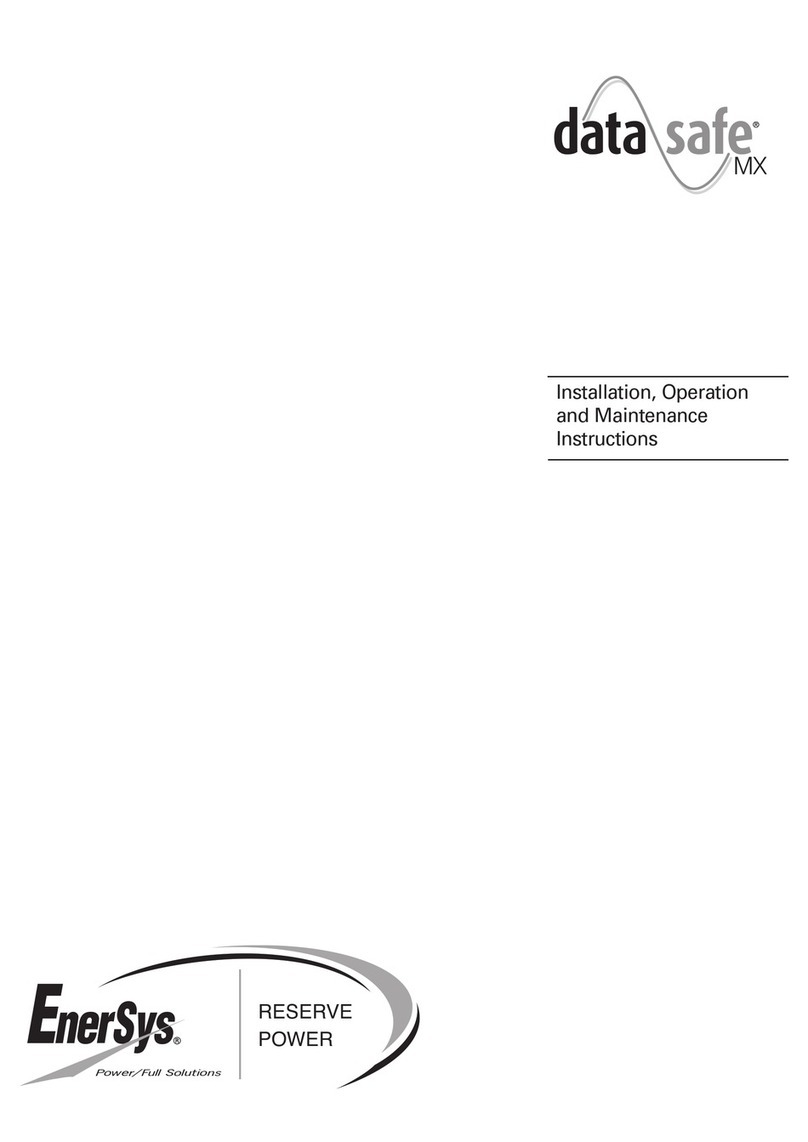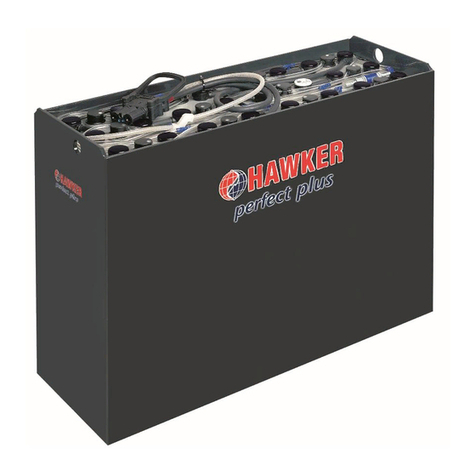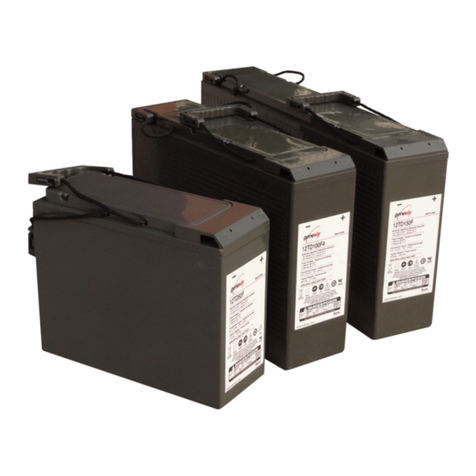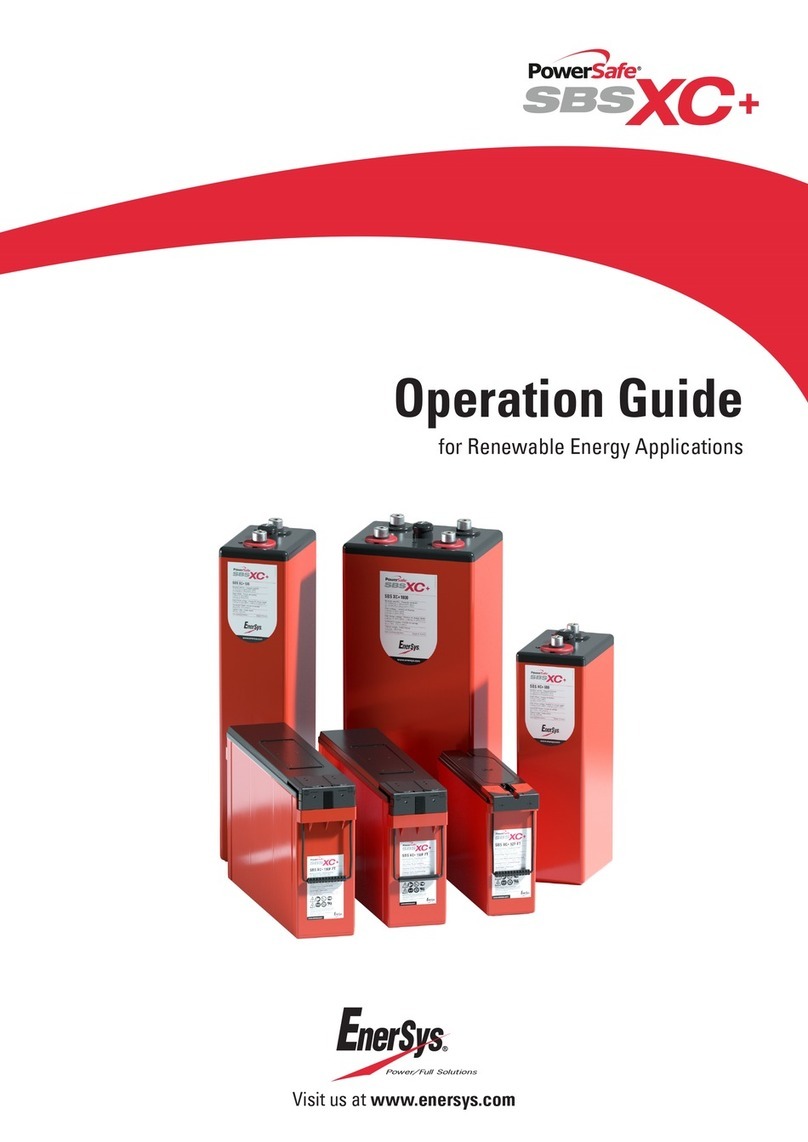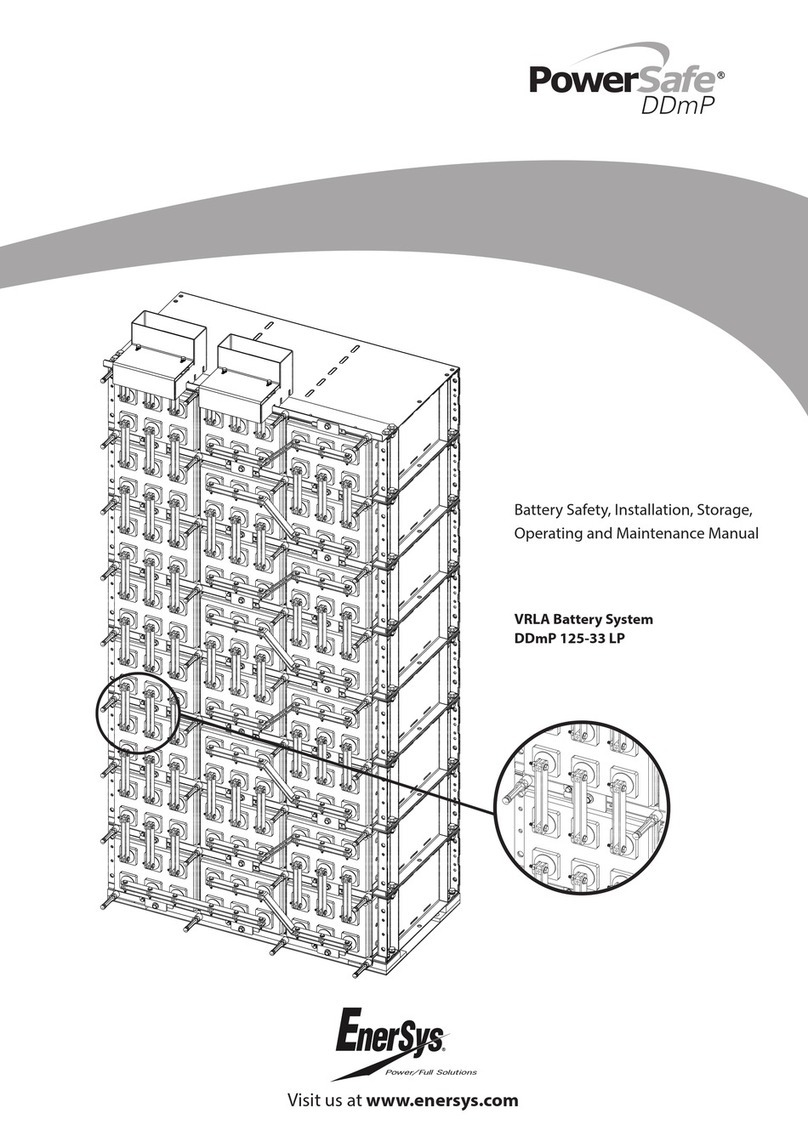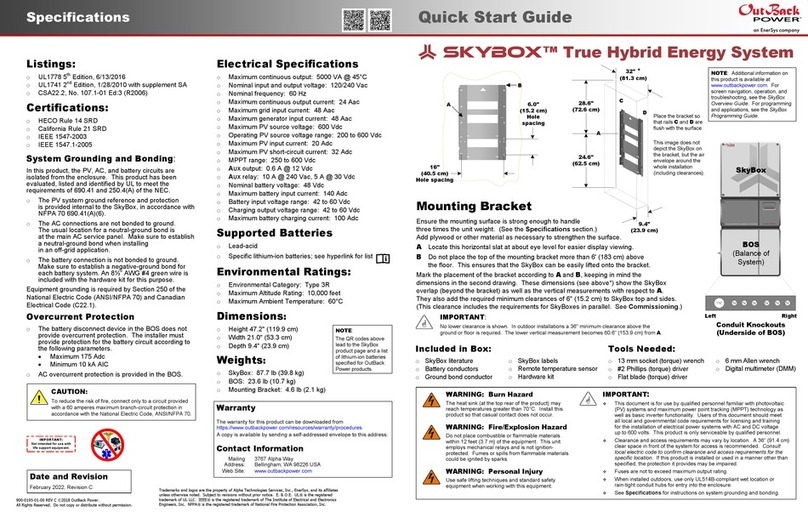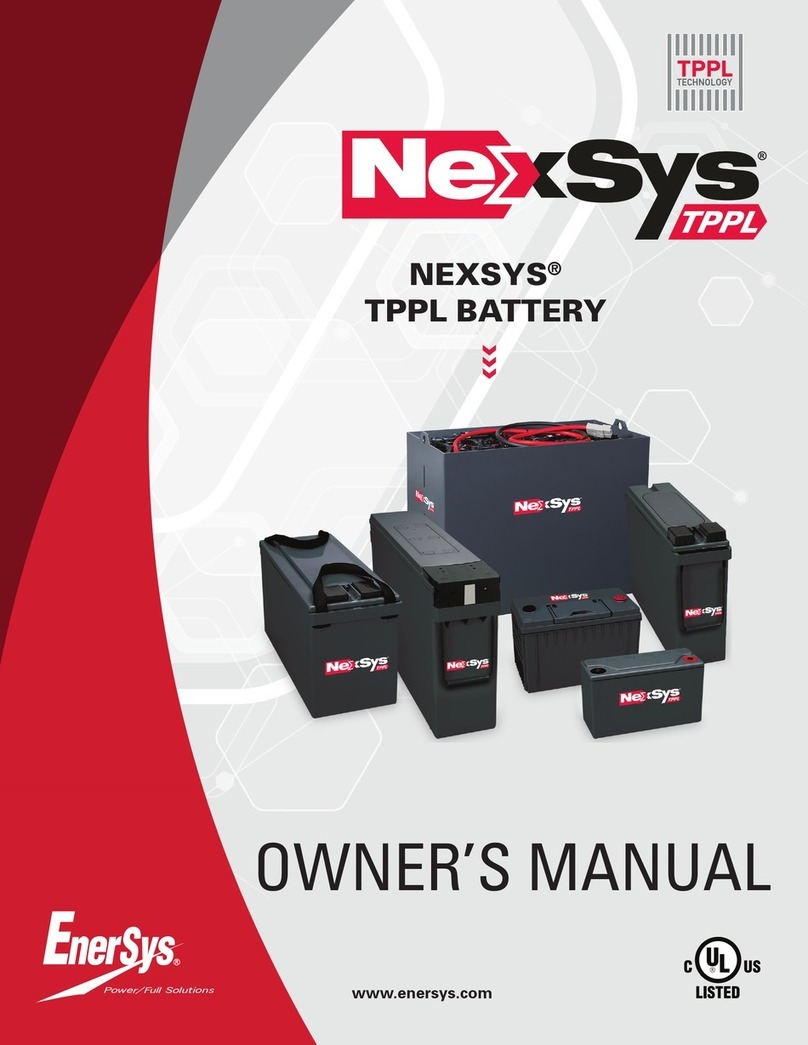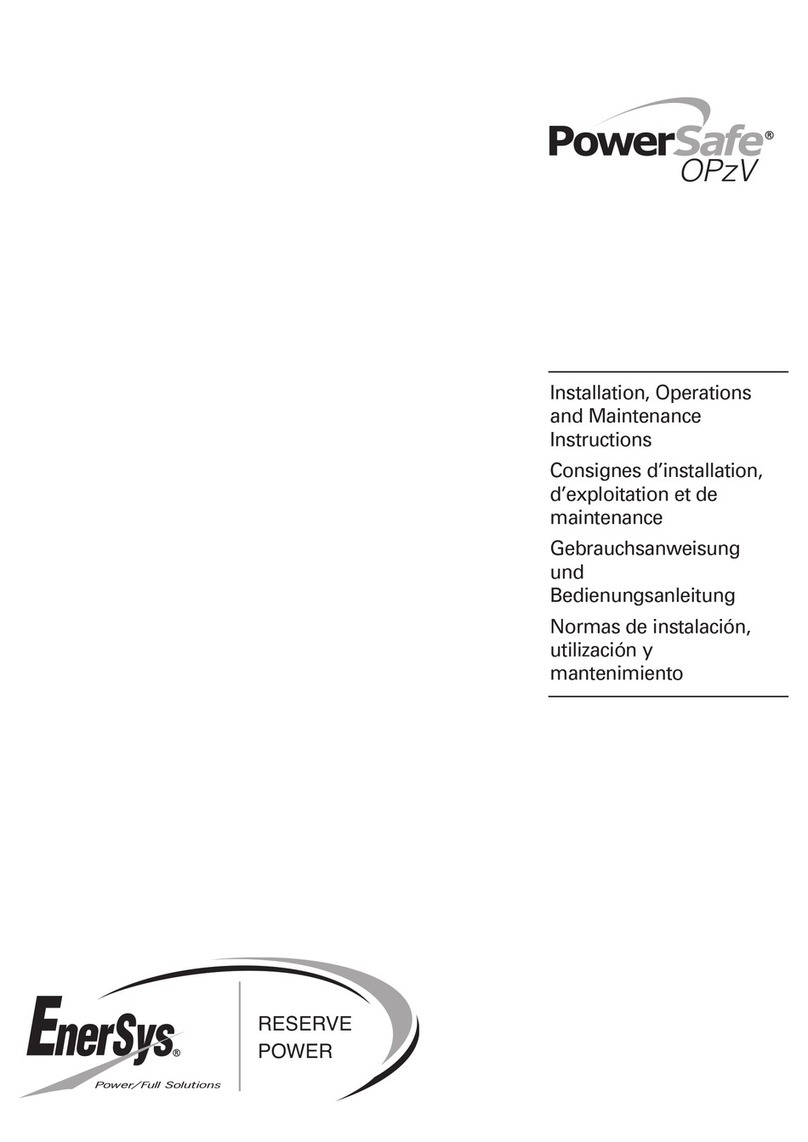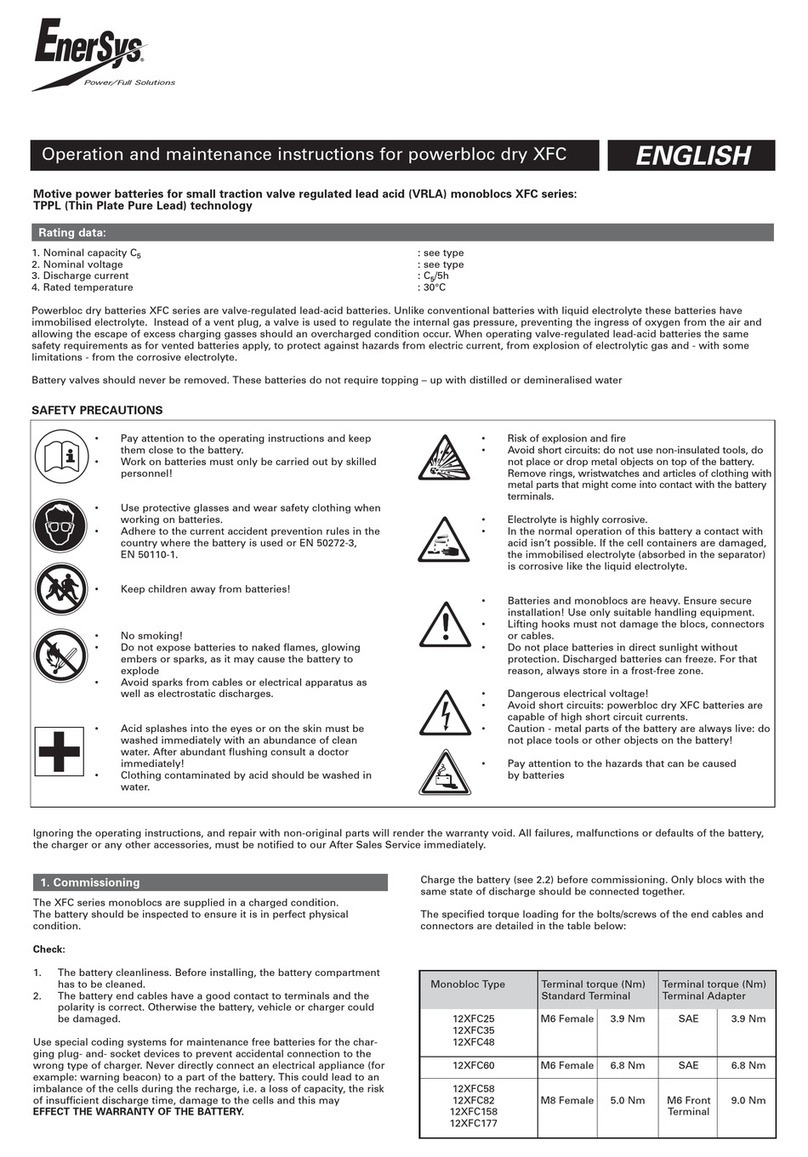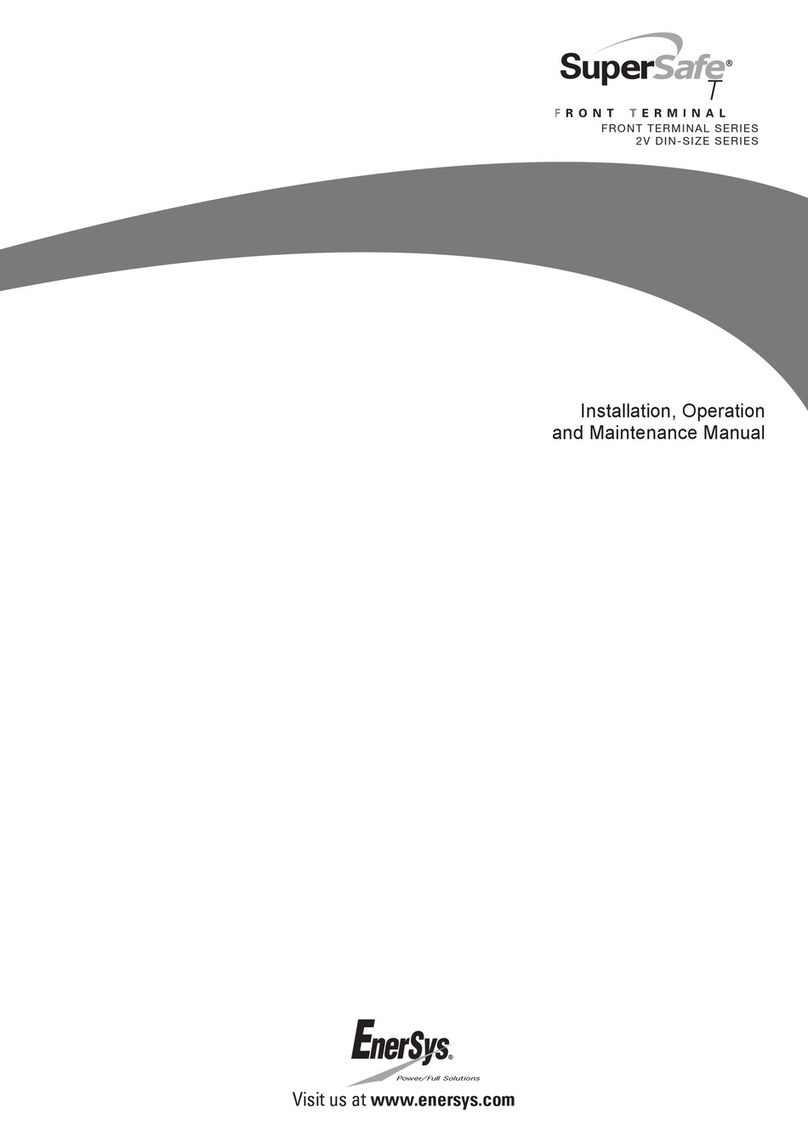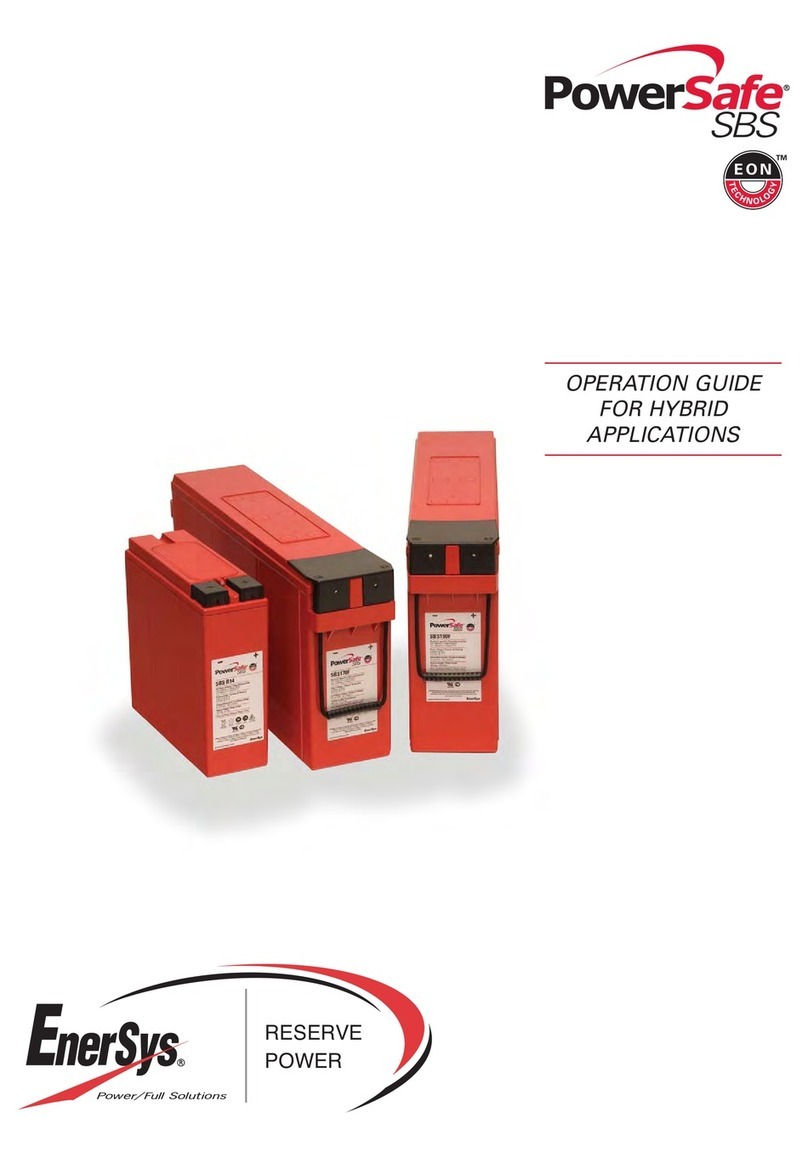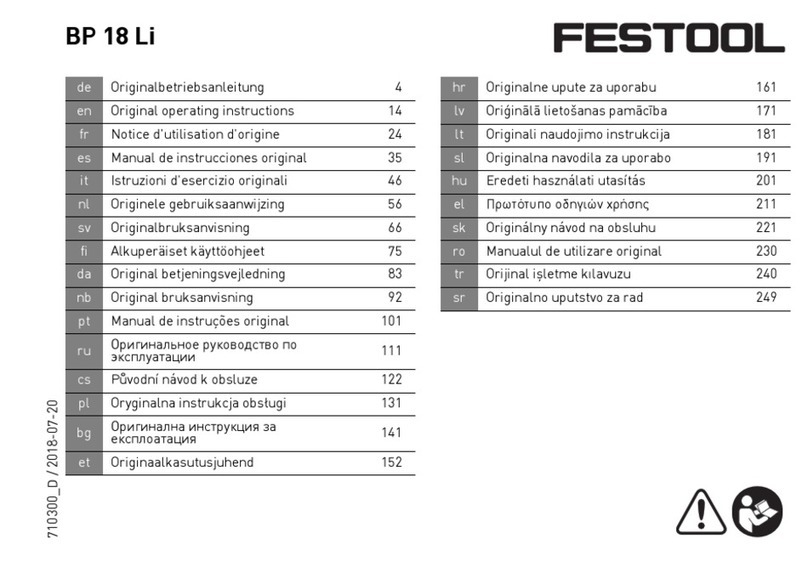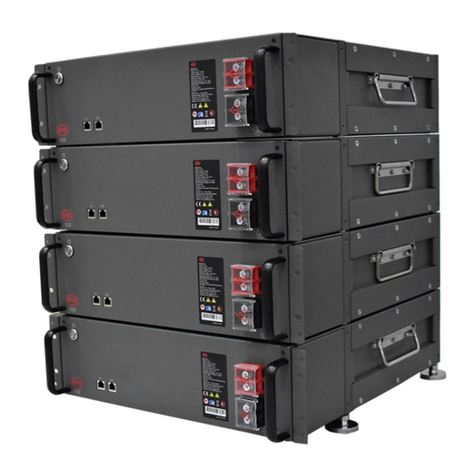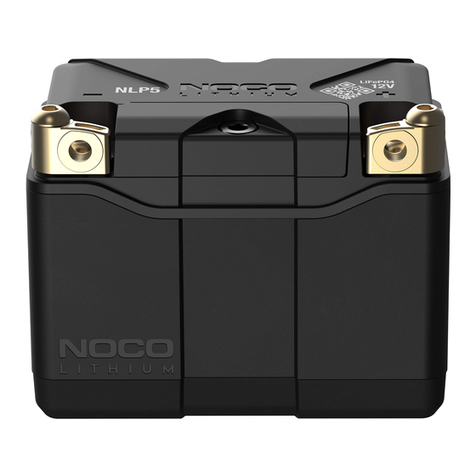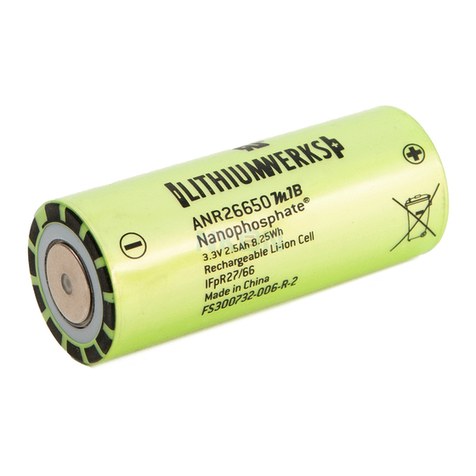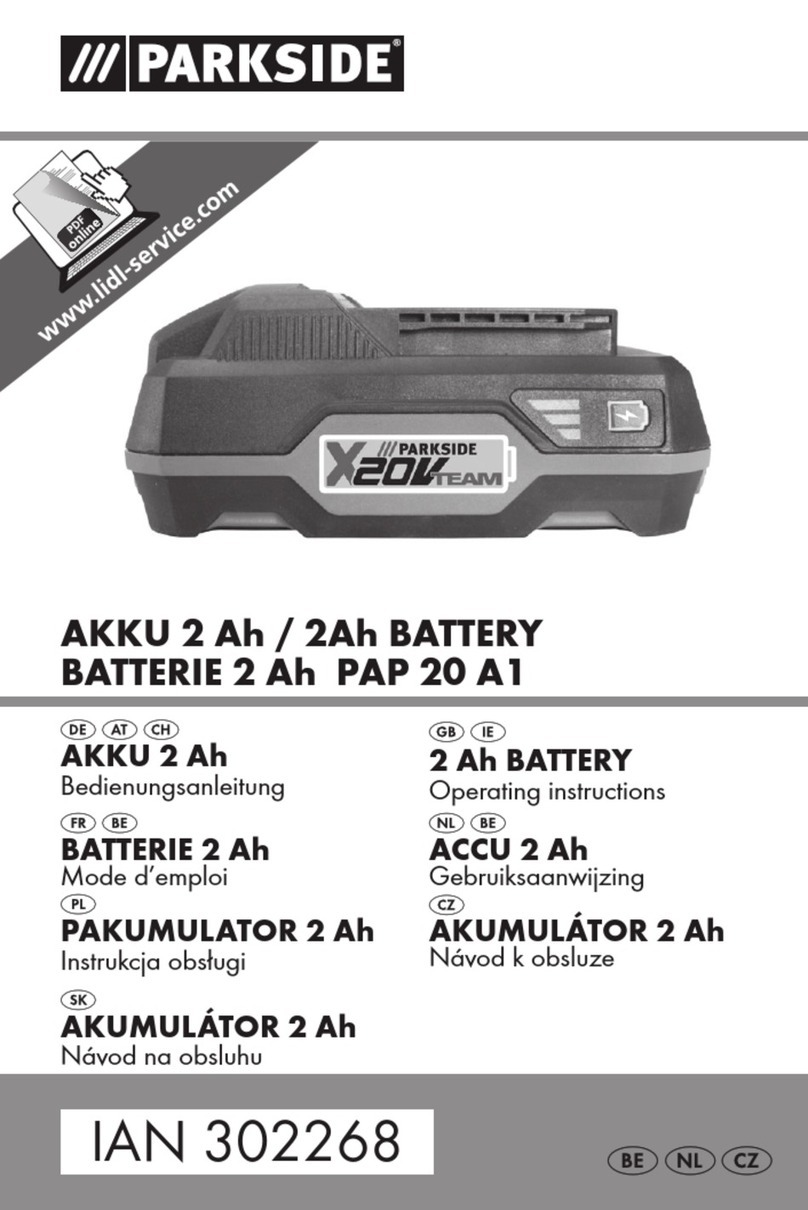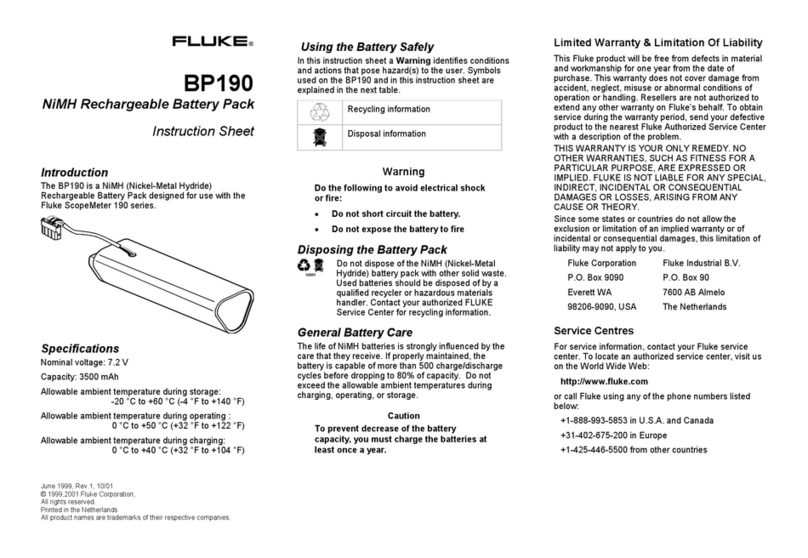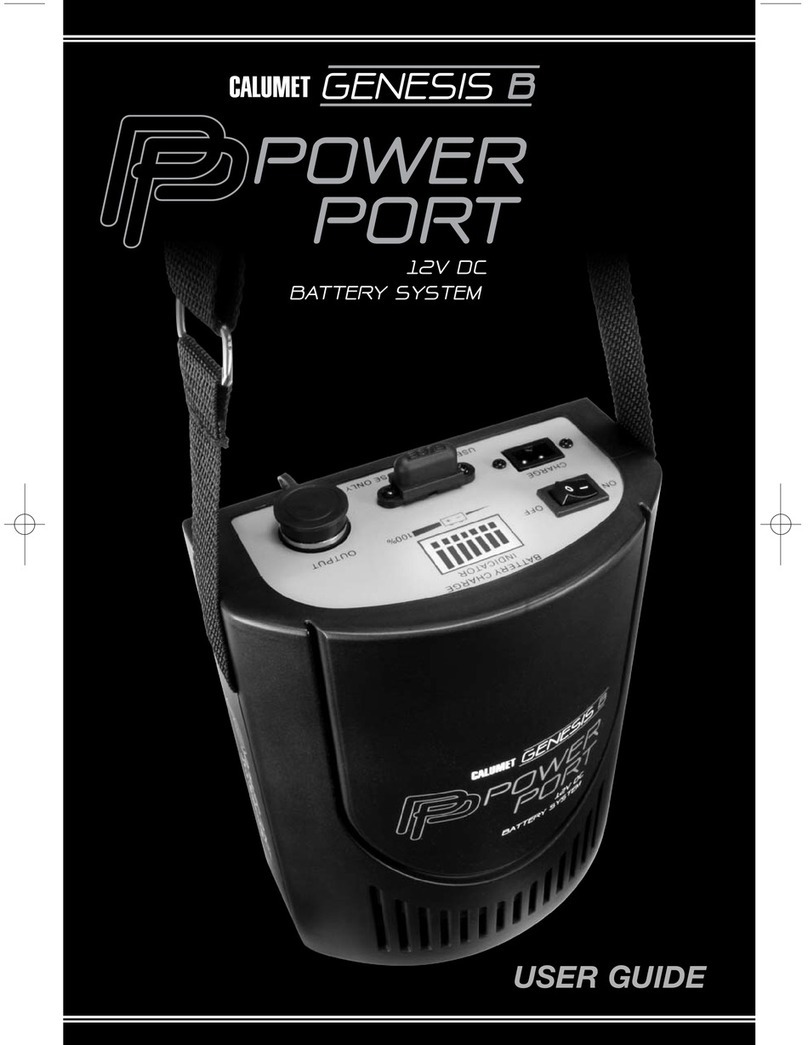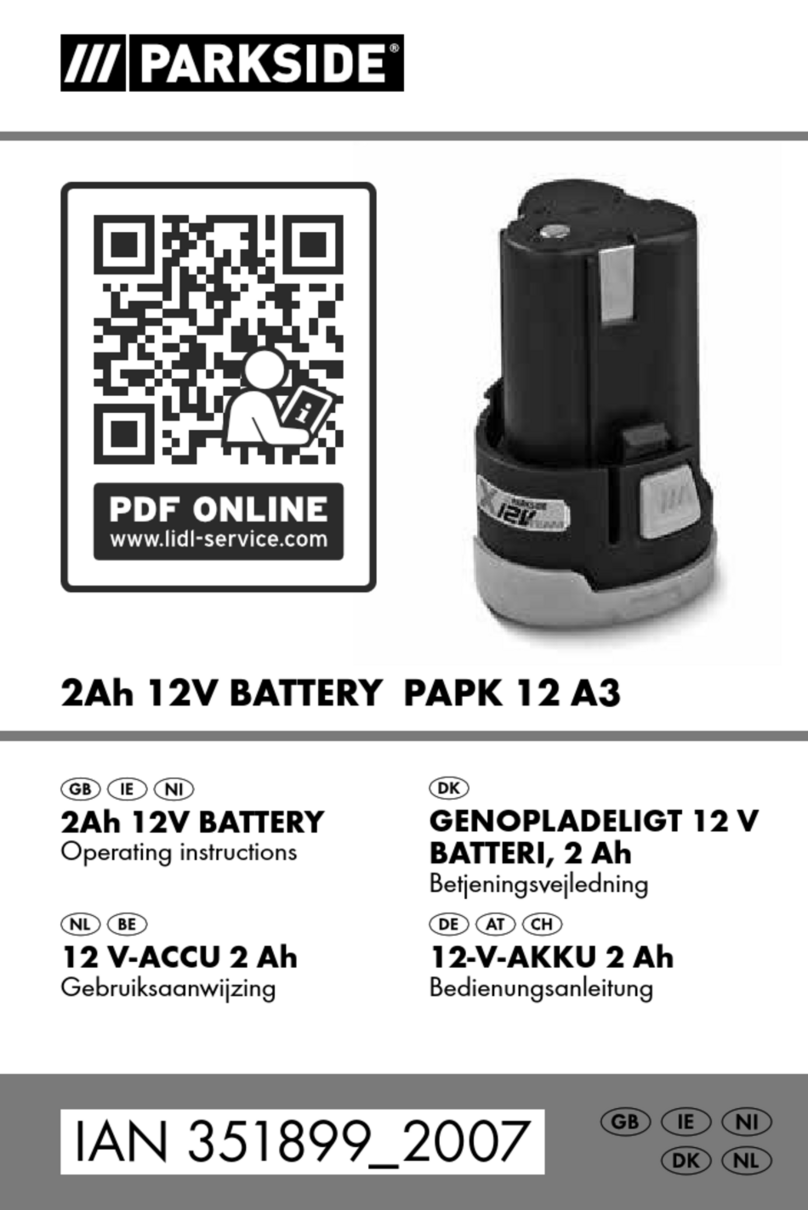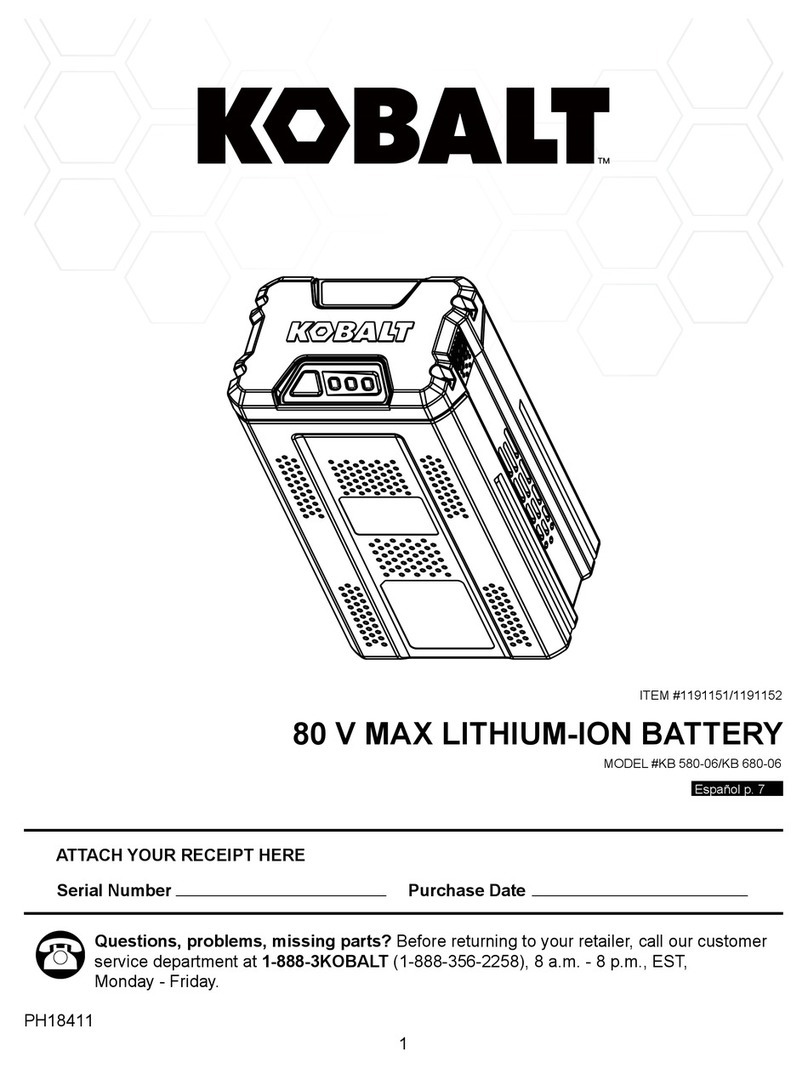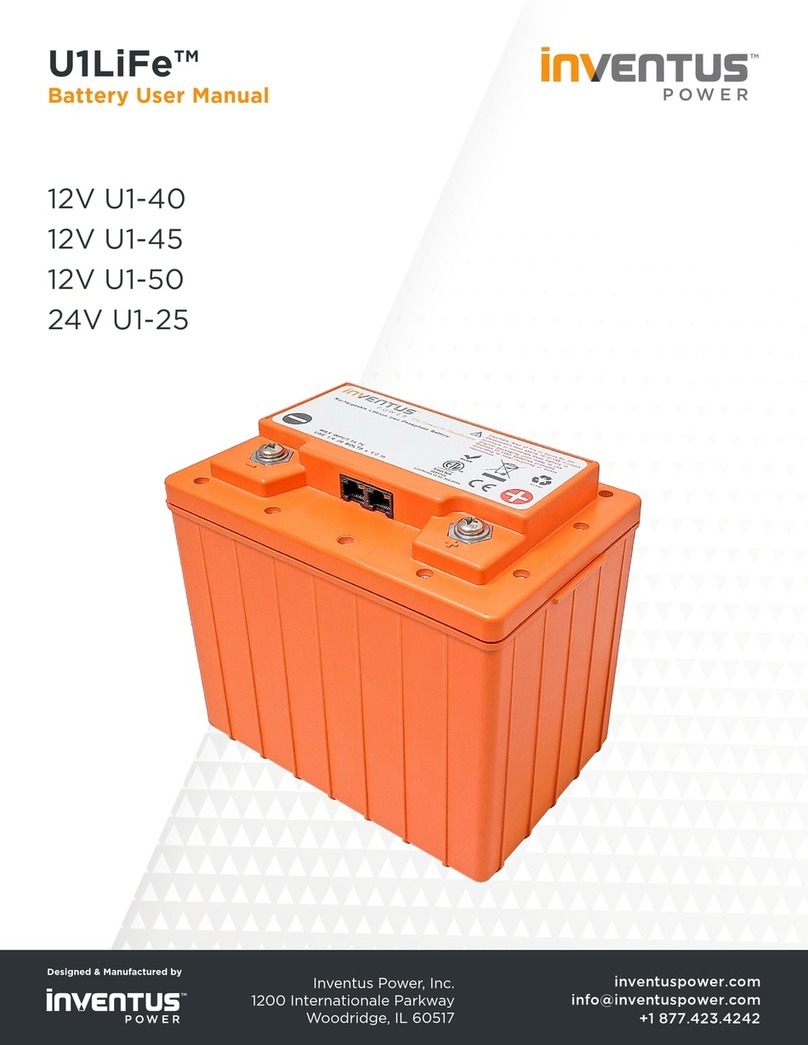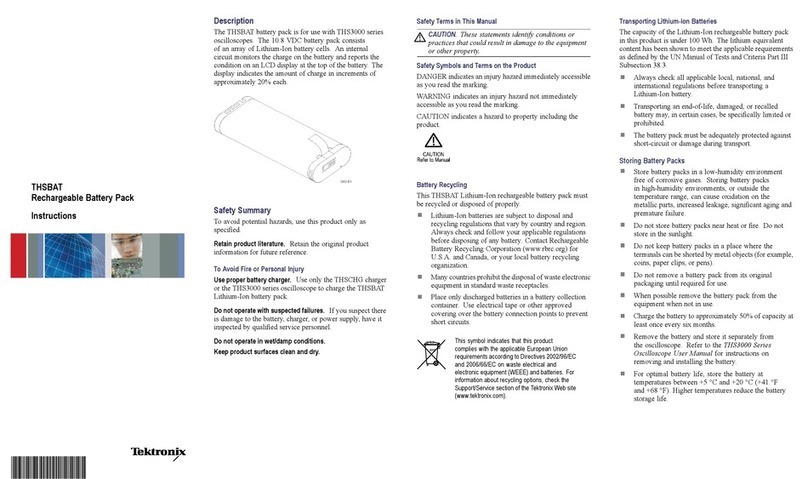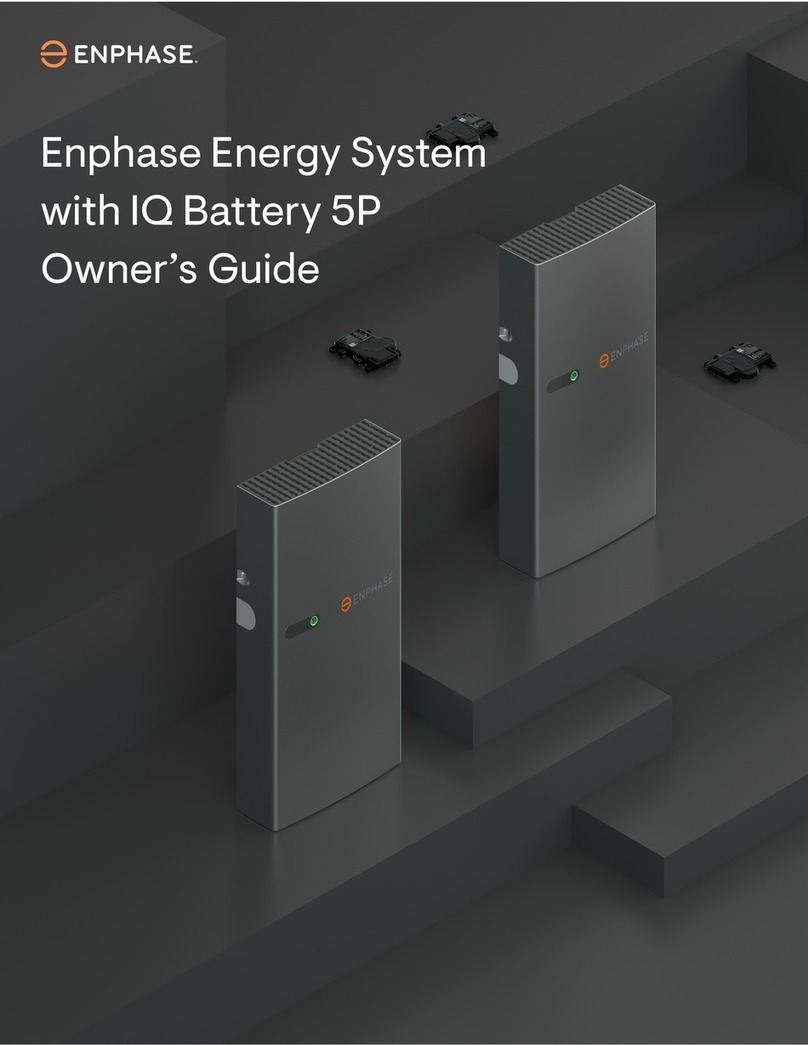
HANDLING AND INSTALLATION
Installation into Industrial Truck
Mechanical Installation
• This battery is designed to be a drop-in
replacement of a lead-acid battery intended to
power an electric industrial truck. Modications
of truck rmware, truck settings, or truck
hardware may be necessary to accommodate the
lithium-ion battery. Consult with industrial truck
OEM for required modications. Depending on
the intended application, connectors, ballast, tray
size, etc., must be customized to ensure the
drop-in compatibility.
• Upon receipt of the battery, it must be checked
for any obvious signs of damage to both battery
and all cables, plugs, and accessories.
• Before installation, check that the battery is
supplied with the appropriate cable harness to
connect the battery to the industrial truck.
• Ensure that the battery weight and center of
gravity requirements per the truck manufacturer
are followed. Weight and overall dimensions are
listed on the type label located on the battery
pack.
• The battery must be handled in a way to mitigate
the risk of drop events and crashes.The correct
tools, lifting points, and method should be used.
• After placement of the battery into the truck’s
battery compartment, the technician must ensure
that the battery is mechanically xed in the
truck against the movement as specied by the
industrial truck manufacturer. After the battery
is xed in the truck’s battery compartment, all
cabling must be checked once again in order to
ensure that no cables, wires, or plugs have been
crushed, pinched, or cut.
Electrical Installation
• The model number for this battery begins with
a 24, 36, 48, or 80 for batteries intended to
replace 24 V, 36 V, 48 V, or 80 V nominal lead-acid
batteries respectively.
• The battery must be connected with the
appropriate cables and connector to the
industrial truck per the truck manufacturer’s
recommendation.
• Only use EnerSys®-approved fasteners,
connectors, cabling, and plugs with this battery.
• The cable dimensioning and DC connecting plug
will vary depending on the truck and end-user
requirements.The truck harness shall comply
with relevant requirements for current carrying
capability and truck interface requirements.
Compliance shall be conrmed by the truck OEM.
NOTE: Defective cables and connectors can result
in functional issues and/or severe safety hazards
such as short circuits and/or re. Cables and
connectors must be regularly inspected for any
damage or issues. Cables and connectors should
only be repaired or replaced by an authorized
EnerSys®representative using the correct factory
replacement parts. No substitution is allowed.
Handling (cont.)
Preparing Battery without Outer Tray for Handling
• Remove the sealing bolts from the threaded
mounting holes on the inner tray.
• Install the EnerSys®-supplied lifting attachments
for the battery.
• After handling the battery, the lifting interface
on the four-point connection on the battery must
be removed and the sealing bolts must be tted
again to seal the thread holes.The acceptable
torque is based on the bolt size: M8 bolts should
be torqued to 34 Nm ± 2 Nm; M12 bolts should
be torqued to 66 Nm ± 4 Nm.
NOTE: For transportation and storage safety
reasons, all NexSys iON batteries are shipped at a
partial SoC. Before the rst operation (refer to page
12: Operation) or further storing the battery (refer
to page 16: Storage) it is required to check the SoC
(refer to page 6: Operator Interfaces) and recharge
the battery if needed (refer to page 13: Battery
Charging).
11




















